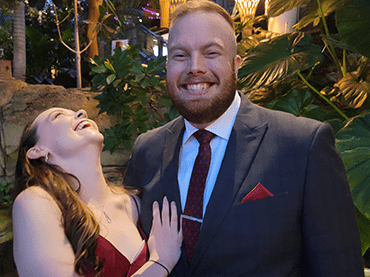
Dale Crawford works as a neurodiagnostic technologist at UPMC Presbyterian, but soon after he started to experience health problems in December of 2020, the young man with a passion for helping patients became a patient himself.
Our patient stories profile those who have had heart transplants at UPMC. Although everyone’s care experience is unique, we hope that sharing these stories will help prospective patients and their families better understand these procedures and their potential impact on patients’ lives.
Note: These patients' treatment and results may not be representative of all similar cases.
Chat Keywords List
